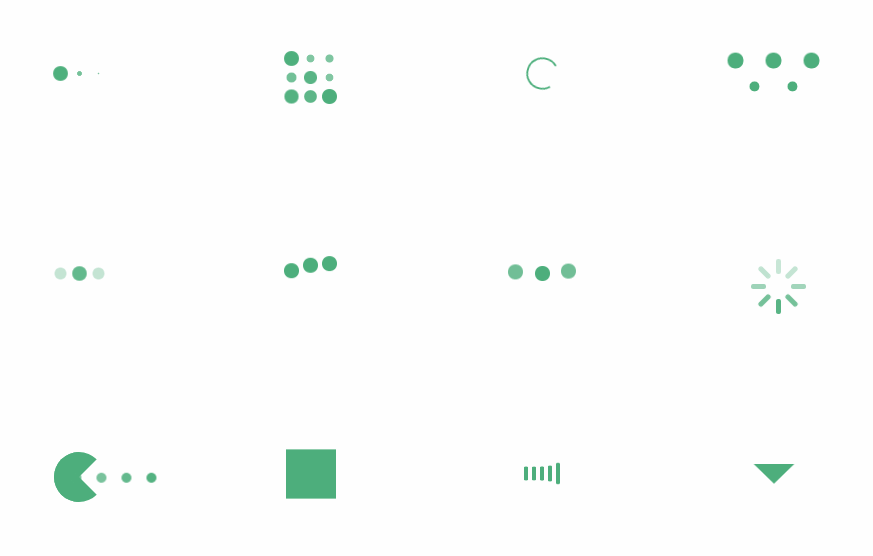Today, We want to share with you Angular 6 HttpClient Loading Spinner Example.In this post we will show you Angular 6 Loading Spinner Example, hear for Intercept all HTTP calls with Angular 6 to display a loader we will give you demo and example for implement.In this post, we will learn about Angular 6 Http Interceptor and Loading Indicator with an example.
Angular 6 HttpClient Loading Spinner Example
There are the Following The simple About Angular 6 HttpClient Loading Spinner Example Full Information With Example and source code.
As I will cover this Post with live Working example to develop Show loader on every request in Angular 6 Example, so the some major files and Directory structures for this example is following below.
Angular 6 Loading Spinner Tutorial Example From Scratch
- Angular 6 HttpClient Loading Spinner Example
- Setup Angular 6
- Setup Angular 6 rxjs-compat library.
- Setup Bootstrap 4.
- Setup Angular 6 epic spinners.
- Make Angular 6 JSON server.
- Setup Angular 6 HttpClient.
- Make Delay to display spinner.
- List of the Angular 6 spinners.
Angular 6 Example
Angular Latest My Previous Post With Source code Read more…..
- Angular 6 Folder Project Structure
- Angular 6 CLI Installation
- Angular 6 Module File
- Angular 6 Components
- Angular 6 Services
- Angular 6 Routing
- Angular 6 CSS
- Angular 6 Class Binding
- Angular 6 Animation
- Angular 6 Templating
- Angular 6 HTTP Client
Step #1: Setup Angular 6 and Create Project
Simple Angular 6 HttpClient Loading Spinner Example
npm install -g @angular/cli //create a local project using Angular 6 ng new angularspinner
Step #2: Setup rxjs-compat library.
npm install rxjs-compat --save
Step #3: Setup Bootstrap 4.
npm install bootstrap --save
src >> styles.css and Import bootstrap.min.css
@import "~bootstrap/dist/css/bootstrap.min.css"
Step #4: Setup Angular 6 simple epic spinners.
npm install angular-epic-spinners
app.module.ts
// app.module.ts
import {AtomSpinnerModule} from 'angular-epic-spinners'
@NgModule({
imports: [AtomSpinnerModule]
})
src >> app >> app.component.html
app.component.ts
// app.component.ts
import { Component } from '@angular/core';
@Component({
selector: 'app-root',
templateUrl: './app.component.html',
styleUrls: ['./app.component.css']
})
export class AppComponent {
display = false;
}
Step #5: Make angular 6 JSON server.
json-server
npm install -g json-server //or yarn global add json-server
db.json
//Json in Angular 6 HttpClient Loading Spinner Example
{
"memberList": [
{
"id": "1",
"name": "Jaydeep Gondaliya",
"salary": "120265"
},
{
"id": "2",
"name": "Krunal Sisodiya",
"salary": "18500"
},
{
"id": "3",
"name": "Ankit Kathiriya",
"salary": "245850"
},
{
"id": "4",
"name": "Chirag dethariya",
"salary": "358523"
},
{
"id": "5",
"name": "Dhaval dave",
"salary": "252030"
}]
}
start the JSON server Run App’s
json-server --watch data/db.json --port 4000
Step #6: Setup GET and POST Angular 6 HttpClient.
app.module.ts
// app.module.ts
import { HttpClientModule } from '@angular/common/http';
imports: [
BrowserModule,
AtomSpinnerModule,
HttpClientModule
],
Member.ts.
// Member.ts
export interface Member {
id: Number;
name: String;
salary: Number;
}
Make a service using CMD
ng g s member --spec=false
member.service.ts
// member.service.ts
import { Injectable } from '@angular/core';
import { HttpClient } from '@angular/common/http';
@Injectable({
providedIn: 'root'
})
export class MemberService {
constructor(private http: HttpClient) { }
url = 'http://localhost:4000';
getMembers() {
return this
.http
.get(`${this.url}/memberList`);
}
}
app.component.ts
// app.component.ts
import { Component, OnInit } from '@angular/core';
import { MemberService } from './member.service';
import { Member } from './Member';
@Component({
selector: 'app-root',
templateUrl: './app.component.html',
styleUrls: ['./app.component.css']
})
export class AppComponent implements OnInit {
display = false;
members: Member[];
constructor(private memberService: MemberService) {}
ngOnInit() {
this.memberService
.getMembers()
.subscribe((data: Member[]) => {
this.members = data;
});
}
}
app.component.html
| ID | Member Name | Member Salary |
|---|---|---|
| {{ member.id }} | {{ member.name }} | {{ member.salary }} |
Step #7: Make Delay(SetTiemOut) to Showing spinner.
app.component.ts
// app.component.ts
import { Component, OnInit } from '@angular/core';
import { MemberService } from './member.service';
import { Member } from './Member';
@Component({
selector: 'app-root',
templateUrl: './app.component.html',
styleUrls: ['./app.component.css']
})
export class AppComponent implements OnInit {
display = false;
members: Member[];
constructor(private memberService: MemberService) {
this.fetchMembers = this.fetchMembers.bind(this);
}
ngOnInit() {
this.display = true;
setTimeout(this.fetchMembers, 2000);
}
fetchMembers() {
this.memberService
.getMembers()
.subscribe((data: Member[]) => {
this.members = data;
this.display = false;
});
}
}
List of Angular 6 spinners Source Code Download
Step #8: List of Angular 6 spinners.
Angular 6 color, size and animation more speed
Angular 6 HttpClient Loading Spinner – Output
Angular 6 CRUD Operations Application Tutorials
- Angular 6 applications – Insert, Fetch , Edit – update , Delete Operations
- Angular 6 CRUD
- Angular 6 and ASP.NET Core 2.0 Web API
- Angular 6 features
- Angular 6 Form Validation
- Angular 6 – User Registration and Login
- Angularjs 6 User Registration and Login Authentication
- Angular 6 CLI Installation Tutorial With Example
- Angular 6 Toast Message Notifications From Scratch
Read :
Summary
You can also read about AngularJS, ASP.NET, VueJs, PHP.
I hope you get an idea about Angular 6 HttpClient Loading Spinner Example.
I would like to have feedback on my Pakainfo.com blog.
Your valuable feedback, question, or comments about this article are always welcome.
If you enjoyed and liked this post, don’t forget to share.

